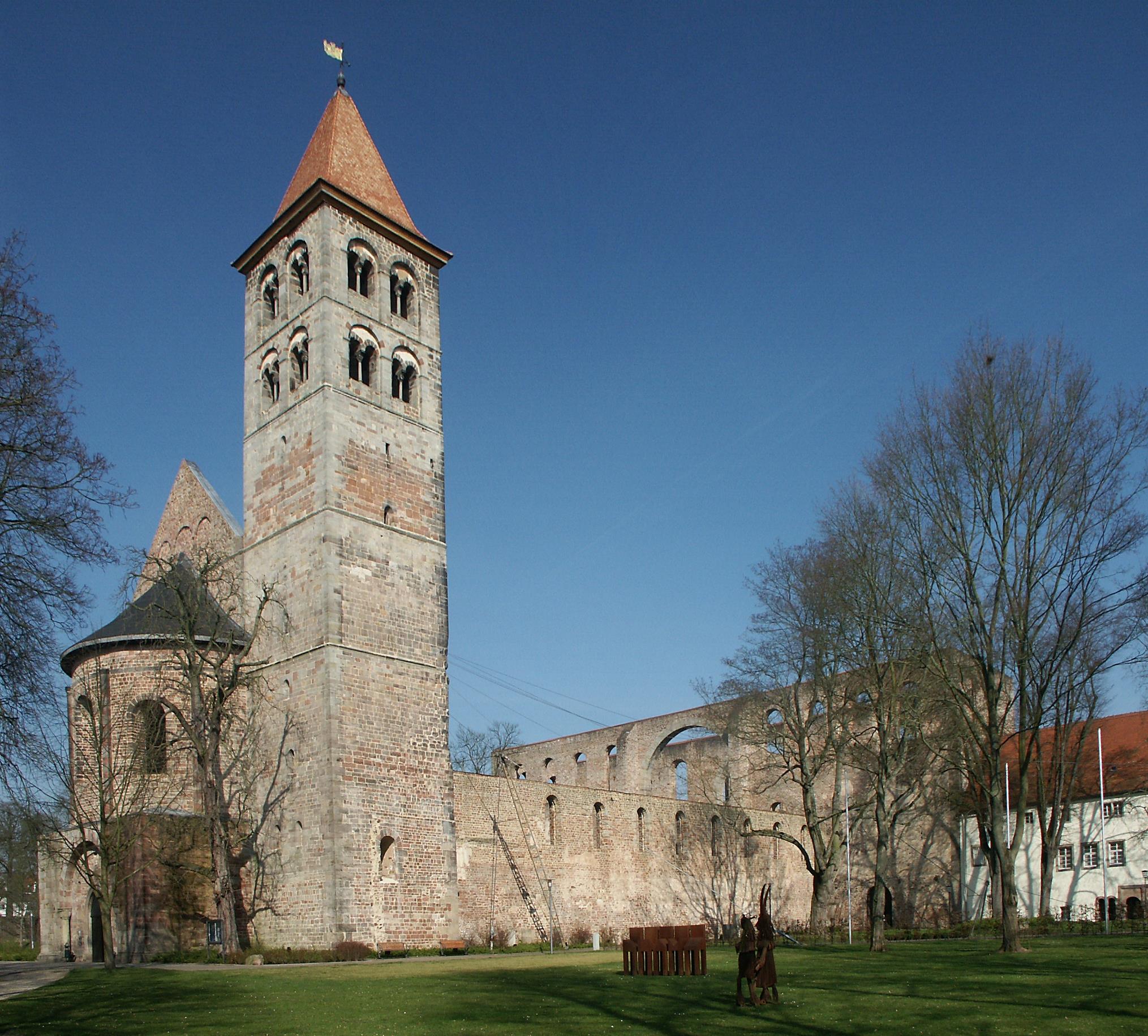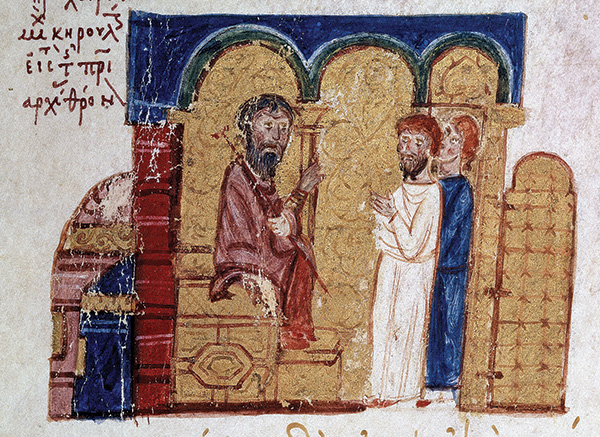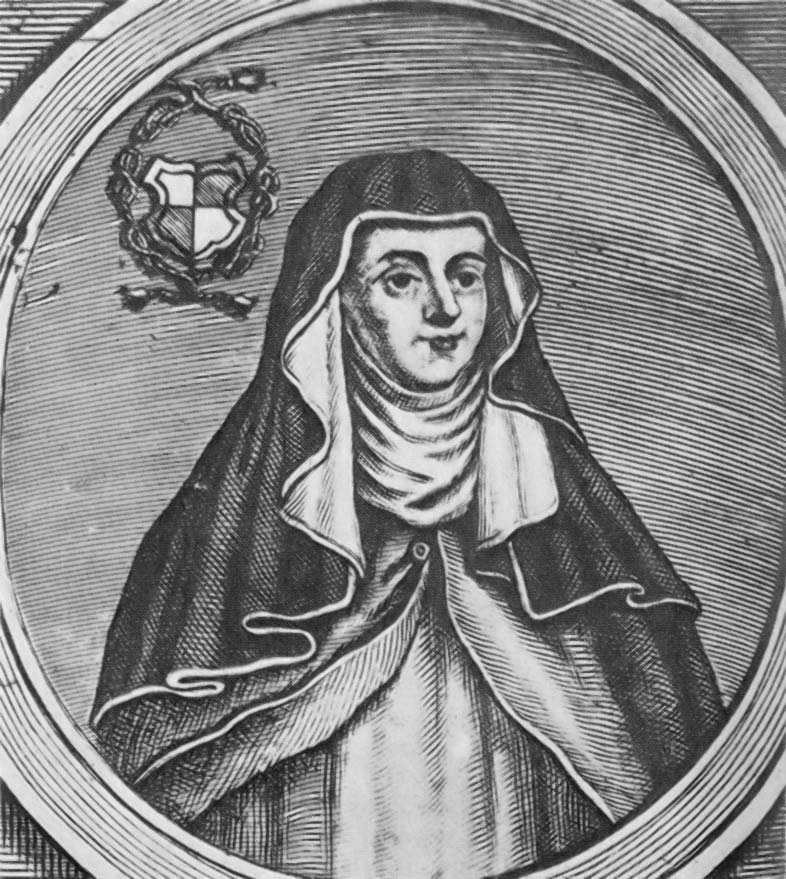|
Adelaide II, Abbess Of Quedlinburg
Adelaide II (german: Adelheid; 1045 – 11 January 1096), a member of the Salian dynasty, was Abbess of Gandersheim from 1061 and Abbess of Quedlinburg from 1063 until her death. Family Adelaide was born about September/October 1045, presumably at the Imperial Palace of Goslar, as the first child of King Henry III of Germany (1016–1056) from his second marriage with the French princess Agnes of Poitou (c.1025–1077), a daughter of Duke William V of Aquitaine. Henry had vainly hoped for a male heir to the throne; unsettled, the royal couple headed for their coronation by Pope Clement II in Rome the following year. Not until 1050, a son, Henry IV, was born, to the great relief of his parents. Adelaide's father died in 1056, leaving their minor son and his siblings under the regency of the dowager empress. Abbacy Adelaide had an elder half-sister, Beatrice (1037–1061), whom she subsequently succeeded in her offices: in 1061, she was elected successor to Beatrice as Imperial ... [...More Info...] [...Related Items...] OR: [Wikipedia] [Google] [Baidu] |
Princess-Abbess Of Quedlinburg
This is a list of princess-abbesses of Quedlinburg Abbey. {{DEFAULTSORT:Quedlinburg, Princess-abbesses Lists of monarchs Lists of female office-holders Lists of clerics Lists of European people ... [...More Info...] [...Related Items...] OR: [Wikipedia] [Google] [Baidu] |
Pope Clement II
Pope Clement II ( la, Clemens II; born Suidger von Morsleben; died 9 October 1047), was head of the Catholic Church and ruler of the Papal States from 25 December 1046 until his death in 1047. He was the first in a series of reform-minded popes from Germany. Suidger was the bishop of Bamberg. In 1046, he accompanied King Henry III of Germany, when at the request of laity and clergy of Rome, Henry went to Italy and summoned the Council of Sutri, which deposed Benedict IX and Sylvester III, and accepted the resignation of Gregory VI. Henry suggested Suidger as the next pope, and he was then elected, taking the name of Clement II. Clement then proceeded to crown Henry as emperor. Clement's brief tenure as pope saw the enactment of more stringent prohibitions against simony. Early career Born in Hornburg, Lower Saxony, in what is now Germany, he was the son of Count Konrad of Morsleben and Hornburg and his wife Amulrad. In 1040, he became bishop of Bamberg. In the autumn of 104 ... [...More Info...] [...Related Items...] OR: [Wikipedia] [Google] [Baidu] |
Investiture Controversy
The Investiture Controversy, also called Investiture Contest (German: ''Investiturstreit''; ), was a conflict between the Church and the state in medieval Europe over the ability to choose and install bishops (investiture) and abbots of monasteries and the pope himself. A series of popes in the 11th and 12th centuries undercut the power of the Holy Roman Emperor and other European monarchies, and the controversy led to nearly 50 years of conflict. It began as a power struggle between Pope Gregory VII and Henry IV (then King, later Holy Roman Emperor) in 1076. The conflict ended in 1122, when Pope Callixtus II and Emperor Henry V agreed on the Concordat of Worms. The agreement required bishops to swear an oath of fealty to the secular monarch, who held authority "by the lance" but left selection to the church. It affirmed the right of the church to invest bishops with sacred authority, symbolized by a ring and staff. In Germany (but not Italy and Burgundy), the Emperor ... [...More Info...] [...Related Items...] OR: [Wikipedia] [Google] [Baidu] |
Halberstadt Cathedral
The Halberstadt Cathedral or Church of St Stephen and St Sixtus (german: Dom zu Halberstadt) is a Gothic church in Halberstadt in Saxony-Anhalt, Germany. It was the episcopal see of the Bishopric of Halberstadt, established by Emperor Charlemagne in 804. The present-day church, which replaced an older Romanesque church,Stiftung Dome und Schlösser in Sachsen-Anhalt , Dom St. Stephanus und St. Sixtus zu Halberstadt was built between 1236 and 1491 in a Gothic style, clearly inspired by the French Gothic cathedrals. In 1591 the Bishop of Halberstadt joined the |
Lambert Of Hersfeld
Lambert of Hersfeld (also called Lampert; – 1082/85) was a medieval chronicler. His work represents a major source for the history of the German kingdom of Henry IV and the incipient Investiture Controversy in the eleventh century. Life What little is known of his life is revealed in scattered details from his own historical writings. Probably a Franconian by birth, of good family, he prepared for an ecclesiastical career at the cathedral school in Bamberg, where he received tuition by Anno of Steusslingen, the later Archbishop of Cologne. On 15 March 1058 Lambert entered the Benedictine abbey of Hersfeld as a monk. On September 16, he was also ordained as a priest in Aschaffenburg and therefore sometimes called Lampert of Aschaffenburg. After his elevation to the priesthood, he made a pilgrimage to Jerusalem. Back in Hersfeld in October 1059, Lambert worked in the cloister library and taught at the monastery school. In 1071 he visited the Benedictine abbeys of Siegburg an ... [...More Info...] [...Related Items...] OR: [Wikipedia] [Google] [Baidu] |
Fief
A fief (; la, feudum) was a central element in medieval contracts based on feudal law. It consisted of a form of property holding or other rights granted by an Lord, overlord to a vassal, who held it in fealty or "in fee" in return for a form of feudal allegiance, services and/or payments. The fees were often lands, land revenue or revenue, revenue-producing real property like a watermill, held in feudal land tenure: these are typically known as fiefs or fiefdoms. However, not only land but anything of value could be held in fee, including governmental office, rights of exploitation such as hunting, fishing or felling trees, monopolies in trade, money rents and tax farms. There never did exist one feudal system, nor did there exist one type of fief. Over the ages, depending on the region, there was a broad variety of customs using the same basic legal principles in many variations. Terminology In ancient Rome, a "benefice" (from the Latin noun , meaning "benefit") was a gif ... [...More Info...] [...Related Items...] OR: [Wikipedia] [Google] [Baidu] |
Pope Stephen IX
Pope Stephen IX ( la, Stephanus, christened Frederick; c. 1020 – 29 March 1058) was the head of the Catholic Church and ruler of the Papal States from 3 August 1057 to his death in 29 March 1058. He was a member of the Ardenne-Verdun family, who ruled the Duchy of Lorraine, and started his ecclesiastical career as a canon (priest), canon in Liège. He was invited to Rome by Pope Leo IX, who made him papal chancellor, chancellor in 1051 and one of three papal legate, legates to Constantinople in 1054. The failure of their negotiations with Patriarch Michael I Cerularius of Constantinople and Archbishop Leo of Ohrid led to the permanent East-West Schism. He continued as chancellor to the next pope, Pope Victor II, Victor II, and was elected abbot of the Benedictine monastery of Montecassino. Stephen was papal selection before 1059, elected to succeed Victor on 2 August 1057. As pope, Stephen retained the Montecassino abbacy, enforced the Gregorian Reform, and continued Leo IX's ... [...More Info...] [...Related Items...] OR: [Wikipedia] [Google] [Baidu] |
Canoness
Canoness is a member of a religious community of women living a simple life. Many communities observe the monastic Rule of St. Augustine. The name corresponds to the male equivalent, a canon. The origin and Rule are common to both. As with the canons, there are two types: canonesses regular, who follow the Augustinian Rule, and secular canonesses, who follow no monastic Rule of Life. Background The involvement of women in the work of the Church goes back to the earliest time, and their uniting together for community exercises was a natural development of religious worship. Many religious orders and congregations of men have related convents of nuns, following the same rules and constitutions, many communities of canonesses taking the name and rule of life laid down for the congregations of regular canons. History Saint Basil the Great in his rules addresses both men and women. Augustine of Hippo drew up the first general rule for such communities of women. It was written in the y ... [...More Info...] [...Related Items...] OR: [Wikipedia] [Google] [Baidu] |
Goslar Precedence Dispute
The Goslar Precedence Dispute (german: Goslarer Rangstreit) escalated at Pentecost in 1063 in the Goslar Collegiate Church of St. Simon and St. Jude from a dispute over the order of seating into an armed confrontation which resulted in several deaths. The background is the early medieval legal system, based mainly on personal loyalty and privileges that could be conferred or withdrawn at any time. Requirements In medieval social order, the symbols and rituals of rank were associated with real power and income. One of these rituals was the order of precedence in the seating at ceremonial occasions. Whoever sat closer to the king or other high-ranking person, had greater rights than other people at the ceremony. As a result, when it was unclear where the delineation was in terms of responsibilities and areas of jurisdiction, so-called "armchair disputes" often arose over the seating order. These rarely resulted in an agreement, because "conceding or giving in would have decided th ... [...More Info...] [...Related Items...] OR: [Wikipedia] [Google] [Baidu] |
Goslar Cathedral
The church known as Goslar Cathedral (german: Goslarer Dom) was a collegiate church dedicated to St. Simon and St. Jude in the town of Goslar, Germany. It was built between 1040 and 1050 as part of the Imperial Palace district. The church building was demolished in 1819–1822; today, only the porch of the north portal is preserved. It was a church of Benedictine canons. The term ''Dom'', a German synecdoche used for collegiate churches and cathedrals alike, is often uniformly translated as 'cathedral' into English, even though this collegiate church was never the seat of a bishop. Design The collegiate church was built east of the Imperial Palace (''Kaiserpfalz''). It was thus close connected with other buildings in the area like the ''Aula regia'' (Imperial Hall or ''Kaiserhaus''), the Church of Our Lady (demolished), the Chapel of St. Ulrich and the Curia buildings that were all close together. Immediately adjacent to the collegiate church were the cloister and refectory, th ... [...More Info...] [...Related Items...] OR: [Wikipedia] [Google] [Baidu] |
Beatrice I, Abbess Of Quedlinburg
Beatrice I, also known as Beatrice of Franconia (german: Beatrix von Franken; 1037 – 13 July 1061), was Abbess of Gandersheim Abbey from 1043 and Princess-Abbess of Quedlinburg Abbey from 1044 until her death. Beatrix was born in Italy towards the end of 1037 as the only child of the Holy Roman Emperor Henry III and his first wife, Gunhilda of Denmark, who died about six months after Beatrice's birth. Reign as princess-abbess Consecration On 14 January 1044, after the death of her kinswoman, Abbess Adelaide I, Beatrice was installed as Abbess of Gandersheim Abbey by her father, overriding the right of the canonesses to elect their own head. She was additionally consecrated Abbess of Quedlinburg on 24 June 1044 in Merseburg Cathedral, also succeeding Adelaide I, and a little later was created abbess of . Conflicts In Gandersheim, she was at the centre of a long-running conflict with the canonesses, who accused her of subinfeudating estates of the abbey that were intende ... [...More Info...] [...Related Items...] OR: [Wikipedia] [Google] [Baidu] |





